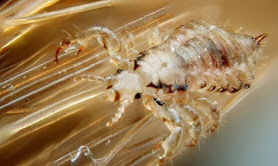Super Lice Resistance to Treatment

It is stressful to discover a louse or a nit in a child’s hair at home or at school, however the fact that head lice have become unresponsive to chemical treatments sold at pharmacies adds a new layer of stress for families. Lice overexposed to chemical lice treatments become more and more resistant to these very treatments. As a result, families are reporting treatment failures and increased lice infestations due to ease in spread of lice when left untreated. In an attempt to win the battle against lice, parents continue to repeat the same lice treatment using the same lice treatment products with the identical chemicals, therefore contributing to the growing problem of lice mutation: higher doses of chemical exposure essentially result in lice becoming fully resistant to this chemical.
Below, the “super lice” problem is analyzed in greater detail supported with recent findings uncovered during lice studies. Most importantly we review professional recommendations and effective solutions for dealing with lice resistance.
WHAT IS SUPER LICE ?
According to National Pediculosis Association (NPA) families have been alerted repeatedly since the late 1990s about the use of over the counter lice treatments. The fact is the chemicals contained in the common over the counter lice treatment kits contribute to the growing resistance of lice to these widely available over-the-counter treatments. Super lice are not as new of concept as we think, lice have been mutating for centuries, however new findings now support the warnings issued by NPA. As briefly mentioned above it is a known fact that over-use or improper prescription of antibiotics will result in bacterial resistance to that medication. Lice being overexposed to chemicals become resistant and more resilient when exposed to the same chemical treatment repeatedly.
Scientists have been studying lice and working on lice treatments for decades. A study performed by researchers at Southern Illinois University found that 95% percent of lice specimens confirmed genetic modifications directly caused by resistance to pyrethroids, active chemicals commonly used to treat lice. According to the article published in The Telegraph, Dr. Yoon, of Southern Illinois University research team states that the growing resistance of lice to pyrethroids accumulated over many decades. Similar use of pyrethroids used in insect repellents and insect sprays resulted in flies growing resistance to repellents, an observation made 5 decades ago, confirming the trend and paving the way for new lice treatment methods.
WHICH LICE TREATMENT WORKS BEST?
An effective lice treatment requires patience and following through with all the necessary lice removal and lice treatment steps. A single treatment does not eradicate every single louse and nit on your head. Nits must be carefully removed, and a single nit left behind will give life to a new nymph, a baby louse, which in turn will mature and lay new nits (eggs). The key to a successful lice treatment is repetitive combing and removal of lice and nits, until every nits has been removed. The products available over the counter are heavy in pesticides which lice gew resistant to and therefore some people resort to unconventional and unsafe treatments.
Below is a comprehensive lice treatment guide detailed by Deborah Altschuler, president of the NPA in an article published in Allure magazine:
- Select natural lice treatment products which do not contain pesticides or pyrethroids. Products labels must list safe and natural utilize safe and gentle ingredients.
- Use lice combs or nit combs to remove lice and nits. If nits are too small to pick up with a lice comb by hand using a fine-toothed comb — this will help stop the growth cycle and help you get a leg up on the infestation.
- Using a conditioning product such as Lice treatment cream allows the combs to glide smoothly. The treatment cream suffocates lice and loosens the nits from the hair, assisting the combing out of lice and nits.
- Take caution and never use unsafe chemicals, animal shampoos, kerosine, gasoline, on your child.
- Basic house cleaning and laundering of personal items and sheets is sufficient, as lice require a human scalp to survive; lice cannot survive longer than 48 hrs without feeding on human blood.
- During the lice treatment cycle and once lice infestation is eliminated, continue to perform frequent lice checks on your children to prevent new lice outbreaks.
At Comb & Cure professional lice treatments are performed in the comfort of your home using products free of insecticides or pesticides. Our technician will arrive at your home with all necessary lice removal tools and lice treatment products to effectively and safely complete lice treatments for your family. Battling head lice infestations alone can feel like a defeat, so if you need advice or assistance connect with one of our specialists anytime, we are a 24 hour service providing nationwide lice treatment assistance. it-zapping treatment.